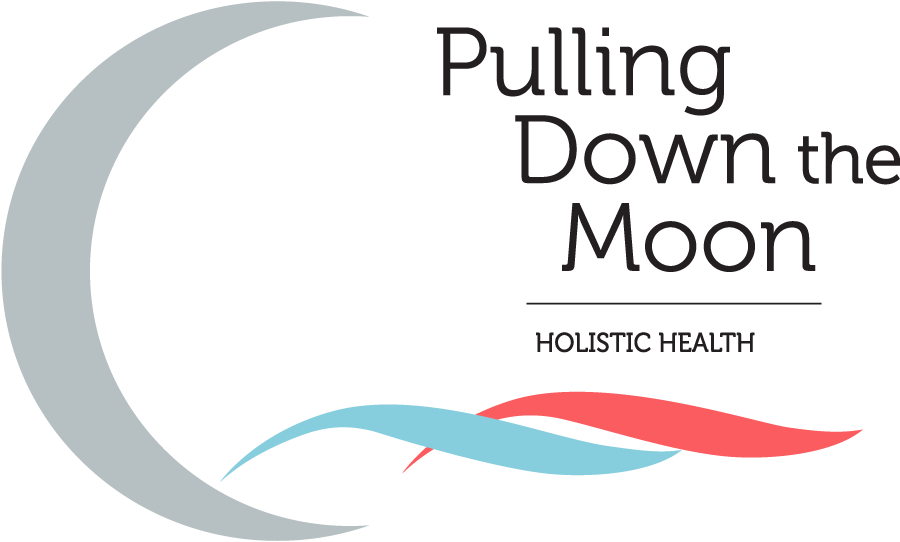The Dynamics of New Motherhood: Is This the Baby Blues or a Perinatal Mood and Anxiety Disorder?

Motherhood, Not What You Thought
Mental health issues are among the most common complications related to childbearing, and yet it is still a topic that is largely misunderstood. A conversation I had with my dentist recently reminded me how little the general public knows about perinatal mental health issues. “Oh, she said, “I just thought women cried a little bit, but you know, they’re usually just so happy to be mothers, right?! We want to believe becoming a mother is an absolute joy. Motherhood is expected to be a fulfilling time for a woman, when a woman is in her most natural role–the role she was meant to play as suggested by film and other media–when her true purpose is determined. In reality, having a child is a profound, frightening, and exhilarating experience at the boundary of life, from which one comes back a transformed person. Most women bear this monumental transition to motherhood with some hardship. Experiences range from tearfulness, exasperation, and nervousness to more extreme feelings of obsessiveness, helplessness, and even murderous fantasies. While many women will have what is labeled the Baby Blues, 20% of women will have a Perinatal Mood and Anxiety Disorder, a debilitating psychological experience that interrupts their lives. With a growing amount of research and education, we begin to clearly see what distinguishes a true Perinatal Mood and Anxiety Disorder from the non-clinical experience of the Baby Blues.
10 years ago I was as unaware as my dentist of what could happen to a woman’s state of mind when she was faced with childrearing, so after my daughter was born I learned in a shocking and destabilizing way–the way most women learn–what a Perinatal Anxiety Disorder was. For me, it started with anxiety attacks while in my third trimester. I shook uncontrollably in the evenings and experienced an overwhelming sensation of claustrophobia during the day. I found a good psychiatrist who helped me understand that taking an SSRI (the one I’d gone off when I got pregnant) would relieve my anxiety and would not hurt my baby. Then after a fairly uncomplicated birth, I was supposed to be thrilled, but I had a new baby who didn’t sleep well. I loved her, but I wasn’t completely attached to her; I was also ragged and jumpy. When she was 4 months old, I started having intrusive thoughts that deeply disturbed me. At first they were like small blips on a radar, like thoughts from the periphery of my mind that I could barely hear. But then the blips grew larger and included images. I could clearly hear thoughts telling me that harm would come to the baby. I could see my baby being sexually violated. I had thoughts that my husband and I would be the ones to sexually harm our baby daughter. I could barely tolerate these thoughts as they began popping in with greater frequency. Luckily, my psychiatrist answered his phone the day I called beside myself in tears. He calmly told me that what I was experiencing was Postpartum OCD, he told me about Karen Kleiman’s book This Isn’t What I Expected, and he raised the dosage of my Sertraline. I was a therapist, a clinical psychologist, and I was learning for the first time what a Perinatal Mood and Anxiety Disorder was; this was not the Baby Blues. I recovered from my Postpartum OCD, but my life was changed forever. Since that time I have done what I can to research perinatal mental health, to immerse myself in the literature and new information we have on this condition, and to talk about it. Talk to women, to friends, to family, and especially to my clients, letting them know they are not alone, they are not crazy, and they can still be the mothers they want to be.
Baby Blues
The term ‘Baby Blues,’ first used in Nicholson J. Eastman’s 1940 best-selling baby care book Expectant Motherhood, is an umbrella term referring to any emotional experience a woman has in the period after bringing home the baby. It is no surprise this massive life transition, along with sleep disturbance, disruption of routine, and emotions from the childbirth experience itself will contribute to how a mom feels. Her experience is also affected by the hormone changes that occur first during pregnancy, and again after a baby is born. The levels of progesterone and allopregnanolone rise during pregnancy and plummet after childbirth, and this drop is thought to contribute to emotional dysregulation. These short-term postpartum symptoms include weepiness or crying for no apparent reason, impatience, irritability, restlessness, anxiety, fatigue, sadness, mood changes, and poor concentration.The informal diagnosis of Baby Blues requires that these symptoms last no more than 2-4 weeks, occurring for a few minutes up to a few hours each day, and typically going away with rest, support, and time. Baby Blues rarely get in the way of daily life or need intervention from a medical provider.
“A baby opens you up, is the problem. No way around it unless you want to pay someone else to have it for you. There’s before and there’s after. To live in your body before is one thing. To live in your body after is another. Some deal by attempting to micromanage; some go crazy; some zone right the hell on out. Or all of the above. A blessed few resist any of these, and when you meet her, you’ll know her immediately by the look in her eyes: weary, humbled, wobbly but still standing. Present, if faintly. Elisa Albert, After Birth (2015)
Perinatal Mood and Anxiety Disorders
When a disturbing emotional state lasts beyond 2-4 weeks, clinicians should start to assess for a perinatal mood and anxiety disorder (PMAD). Formerly referred to as Postpartum Depression, or simply “postpartum, we now use the term “Perinatal because the symptoms can occur not only one year postpartum, but also during pregnancy, or after a pregnancy loss. We say “Mood and Anxiety Disorders instead of “depression because it more accurately covers the range of experiences women have. These include major depression, generalized anxiety, OCD, PTSD, and postpartum psychosis.
Although there is no clear indicator of who will experience a PMAD, previous mental health issues, trauma, and lack of resources are some of the risk factors. Important to note: PMADs do not affect just biological mothers. Growing research shows us that men experience postpartum anxiety and depression. In fact a client of mine came in a few weeks after her baby was born and reported that her husband was acting strangely: yelling a lot, throwing pillows at the wall when the baby cried, uncontrollably crying, and openly fantasizing about leaving the baby out in the snow. We were able to get him in for a session with her and help him understand that he needed help. The couple was surprised that he was having postpartum rage, while she was adapting well. He actively resented his child for destroying their former life, while she’d become protective of the child. Eventually, with months of treatment, he was able to love and attach to his daughter.
Similarly, adoptive parents may report symptoms of PMADs: it can be particularly confusing to resent or feel disconnected to an adopted baby whom you wanted and planned for and possibly spent much or most of your savings on. Likewise, LGBTQ families who may have worked for years on fertility treatments or with a surrogate to finally bring home a baby are also vulnerable to PMADs and should not be ignored as a population worth assessing.
Perinatal Depression
Perinatal depression mimics that of a major depressive disorder but with certain symptoms specific to mothering. A woman may be withdrawn from the baby and her family, not want to hold the baby or have difficulty bonding, have a flatness of facial expression and voice, exhibit excessive tearfulness, or severe self loathing. She may have a belief that she can’t handle motherhood or be a good mother, she may be unable to enjoy most of her life, or she may believe her family would be better off without her.
A client of mine described feeling like she couldn’t see herself in the family picture. She vacillated between dissociation and depression. This mom had twin baby girls with whom she was not bonding. She felt like a machine part going through the mechanical motions of caretaking. After her first session of unburdening herself of the sadness and shame she carried, she was able to start to locate herself. Her experience points to the invisibility some women feel as mothers. The erasure of self to motherhood is well noted by the poet Alice Notley:
“For two years, there’s no me here….
Two years later I obliterate myself again
having another child (1972)
Perinatal Anxiety and PTSD
Perinatal anxiety, or anxiety during and after pregnancy, has received little attention compared to its well-known cousin, postpartum depression, yet anxiety symptoms are more frequently reported. Worrying, of course, is a normal part of new motherhood–checking that the car seat is secure or that the baby is still breathing, for example–but if it interferes with a woman’s life so that she cannot think about other things or take care of herself or her baby, then it verges on mental illness.
For women who are prone to anxiety, the information-saturated era we live in is loaded with potential stressors about conceiving, being pregnant, and parenting, requiring women to be vigilant about what information she is exposed to. An anxiety disorder can be spotted in the repetitive fears and questions moms have, in extreme over-protectiveness such as not letting anyone hold the new baby, or in the too well put-together mask some moms wear, hiding an internal world out of control.
Post-Traumatic Stress Disorder (PTSD) in the perinatal period refers to past trauma resurfacing during the perinatal period, including flashbacks and nervous system responses (freeze, flee, fight) that can interrupt caring for a new baby. What many doctors do not realize is that women who have experienced sexual trauma may have fear of a baby coming out of the vaginal canal, a fear of male providers, and/or a fear of being alone with baby.
Perinatal Obsessive-Compulsive Disorder
Obsessive compulsive disorders are possibly the most insidious of the postpartum conditions because they include the intrusive thoughts that haunt many mothers. Intrusive thoughts are thoughts that happen frequently and randomly, feel uncontrollable, and are often disturbing. These disturbing thoughts, or obsessions, can lead moms to engage in repetitive behaviors, or compulsions, to try to ease their anxiety. Many moms with OCD are plagued by repetitive fears of harm coming to their babies, possibly due to the extreme helplessness of a newborn baby. It is horrifying for mothers to have uncontrollable thoughts and images of their baby tumbling down the stairs or falling out a window, or images of themselves smothering the baby or sexually abusing their own child. Because of the disturbing nature of these thoughts, it can be the most difficult disorder to admit, yet, as was my experience, by breaking the silence women can find tremendous relief in the normalization of Perinatal OCD.
Postpartum Psychosis
Postpartum Psychosis is the most rare of perinatal conditions, occurring in .1% of moms, but it is the most dangerous. Psychosis is a break from reality that can happen over time but can also become a medical emergency very quickly. As with Postpartum OCD, a mom may experience intrusive and paranoid thoughts, but instead of being disturbed by them, she may begin to identify with them. For example, a new mother may have the thought that someone is going to steal her baby, so she acts on it by hiding the baby or running away with the baby. Unfortunately, it is typically after a postpartum psychotic episode has ended badly that the media gives it attention. Just a few years ago a woman who I know from my hometown was arrested for the death of her 14 month old boy. After months of working full time, bad day care experiences for her baby, an unstable partner, and increasing symptoms of OCD and paranoia, she came to believe she and her son would be better off dead. After she suffocated her baby she attempted to overdose on medications, but she survived. Even though the she had an expert forensic psychiatrist diagnosed her with Altruistic Filicide, deeming her Not Guilty By Mental Defect, she was sentenced to 25 years in prison. Unfortunately, there is still little understanding or mitigation done for mothers convicted of infanticide, resulting in excruciating treatment and excessive sentencing.
Treatment
Women may find it difficult to reach out for help, as it is taboo to admit you are unhappy or unnatural at motherhood. To the extent that women in our society are still seen as playing their most natural role as mothers, to acknowledge unhappiness or discomfort may have high stakes relating to women’s own identities and how others may see them. A mom may fear being seen as a “bad mother, which would ostracize her from mainstream society. With more education and awareness around the frequency and epidemiology of perinatal mental health issues, much of this silencing can be alleviated. What is essential to understand is that a woman herself should not be blamed–not by her providers, her family, or herself–for a perinatal condition. We often have little control over the occurrence of a Perinatal Mood and Anxiety Disorder, but we can do much about its treatment.
Psychotherapy and Medication
With a proper diagnosis of a Perinatal Mood and Anxiety Disorder, good treatment can support a full recovery. The best form of treatment is individual psychotherapy that reduces stigma and shame and normalizes the client’s experience. Besides reassuring women that it’s normal to feel ambivalent during pregnancy and motherhood, I also educate each woman about her particular diagnosis. Women often feel desperately alone and deeply ashamed when they experience PMAD symptoms, especially ones that are less talked about like rage or intrusive thoughts. I reassure my clients that these inner experiences don’t indicate their worthiness as mothers but are instead treatable symptoms of common disorders. Women express tremendous relief when they realize that their scariest and most shameful symptom is something others also experience–and something we know how to treat. Helping women accept all the parts of themselves will reduce symptoms of anxiety and depression. One important goal I look to when working with PMADs is helping women regain a sense of self. It may not be the self they knew before the baby but a new self that emerges in the transformation. Questions we consider: How does having a baby disrupt a mother’s sense of who she is, of her body, her understanding of life and death, her relation to the world and to her sense of independence, her experience of fear and hope and time, and the structure of her experience altogether?
Therapy may include the new baby, so that I can support a secure attachment and help the mom experience the infant’s behavior without insecure projection and negative interpretation. I may recommend infant massage or, inversely, setting the baby down for an extended period. Therapy may also include the partner or other family members. Marital disharmony is the most commonly cited non-biological cause and consequence of PMADs, so by bringing in and educating the partner on PMADs, a mom is more able to be understood and get her needs met at home. Group therapy, such as a moms support group, can be an excellent way to reduce shame and isolation, as it can provide universality, catharsis, socialization, and good information.
Additionally, psychopharmacology is an effective form of treatment for Perinatal Mood and Anxiety Disorders. Current research and an updated classification system (no longer the A, B, C labels for medications that were often misleading) suggest many medications are safe during pregnancy and breastfeeding. There is still damaging stigma around medication and pregnancy that needs to be fought with accurate information. Reducing a previously prescribed medication for pregnancy or changing a medication during breastfeeding are potentially misguided recommendations that can put a women at risk of relapse. The American College of Obstetricians and Gynecologists and the American Medical Association agree that treating the mother’s health is the priority; the trace amounts of medication that a fetus or nursing baby will receive should not keep a mother from the medical treatment she needs.
Although public awareness of postpartum depression has increased in recent years thanks to celebrities like Brooke Shields and Serena Williams, many people–including therapists–are still learning that PMADs are serious and pervasive experiences. When I started talking about my Postpartum OCD experience one of my aunts told me the story of my grandmother, who had three children in four years. The day after they brought home the third baby my grandfather got in his car to go to work, as he started to pull out of the driveway my grandmother came running outside and threw herself on the hood of his car. She spent the next 7 months in a sanitarium, a nicer version of an asylum in a neighboring state, and came home to her children who were being cared for by a strict German nanny. It’s possible my grandmother was experiencing depression or anxiety or even psychosis, they sent her away and no one discussed it. Although awareness and treatment have improved since the harsh days of my dear grandmother, perinatal mental health is still overdue for the attention it deserves, considering women are doing some of the most laborious and important work of our world.
Brooke Laufer is a Clinical Psychologist who has been practicing psychotherapy since 2005. Brooke began her clinical work in psychiatric wards and then in schools with adolescents and their families. After having her first child Brooke had a disturbing Postpartum OCD experience, which inspired her to begin researching, understanding, and specializing in the treatment of perinatal mental illness. She has a private practice in Evanston, where she continues to treat adolescents and adults, specializing in perinatal mental health issues.



